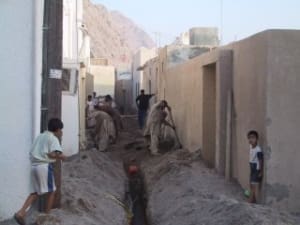Water Supply and Sewerage in the 21st Century
The City of Marki in Poland, north east of Warsaw and Wodociag Marecki the Utility Company that maintains the water and sewerage systems in Marki City are quite unique.
There is a very close relationship between the utility, the City and Warsaw University of Technology. Over the last ten years they have done a number of concepts, designs and installations using a number of different technologies for specific sight conditions throughout their area. These have included vacuum sewers, gravity sewers, pressure systems and even domestic on-site treatment plants.
Prior to this initiative the City had relied on septic tanks so they wanted to ensure that they used the right technology for the right area and community. What has been tremendous about this effort is the city’s willingness to share their experiences with others around the country. Flovac applauds their efforts in this field and have been very happy to support them.
On a periodic basis seminars have been held to discuss their findings, the most recent of which was recently held in Zegrze near Warsaw. The seminar was titled (Water Supply and Sewerage in the 21st century) and included representatives from a number of local authorities and utilities from the north east of Poland. Experts were invited to talk on different subjects.
On Vacuum Sewerage Systems the speakers were:
Prof. Dr hab. inż. (prof. PhD Eng) Zbigniew Heidrich – Politechnika Warszawska (Warsaw Univerity of Technology)
Dr inż. (PhD Eng) Marek Kalenik – Szkoła Główna Gospodarstwa Wiejskiego (Warsaw University of Life Science)
Dr inż. (PhD Eng) Jacek Sobesto – Flovac Polska sp. z o.o.
Dr.inż. (PhD Eng) Grzegorz Stańko – Wodociąg Marecki sp. z o.o.
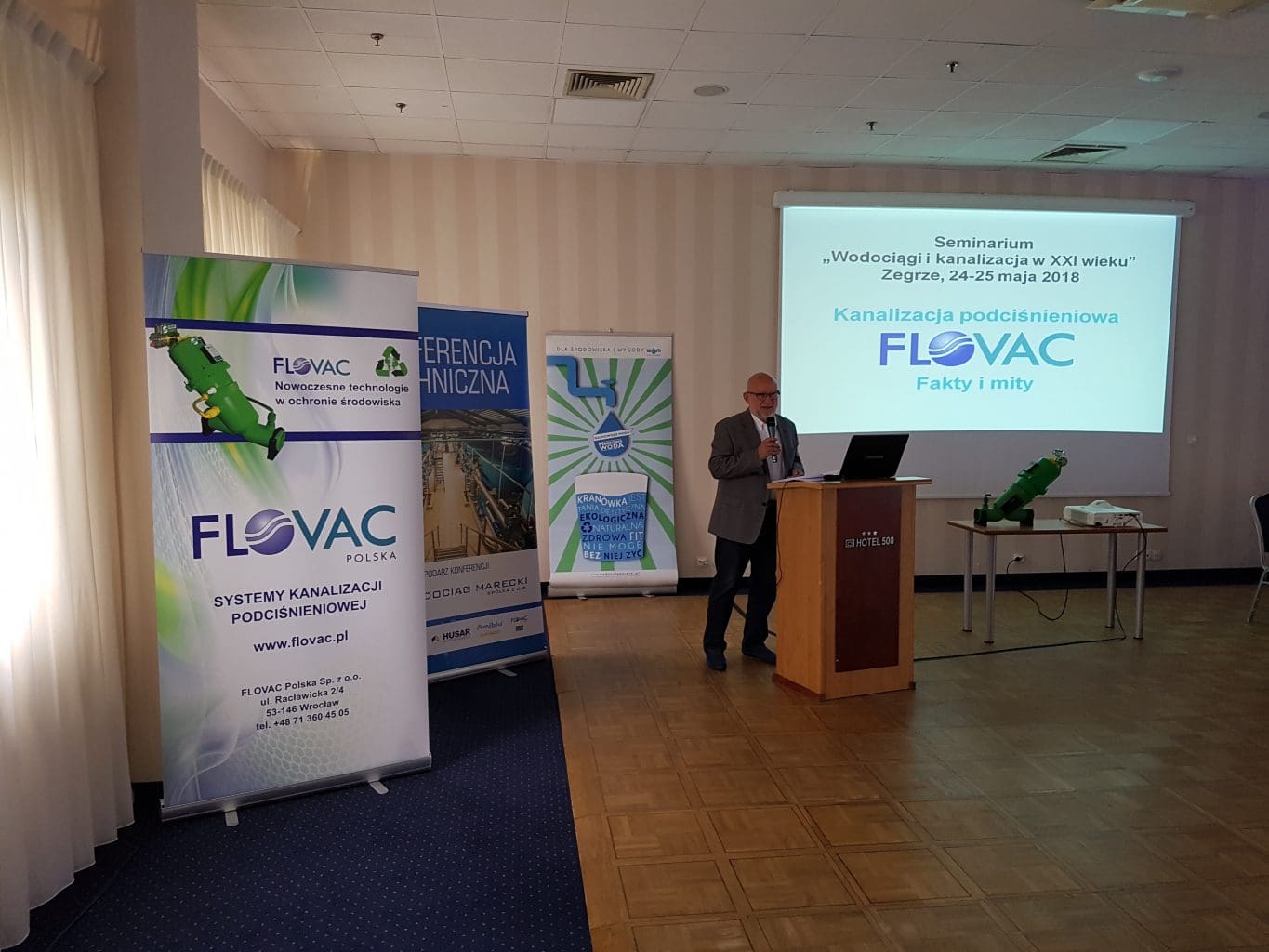
Dr Jacek Sobesto of Flovac Polska
One of the largest Flovac systems in Poland is based in the City of Marki and has over 800 Flovac valves connecting residents to the vacuum sewer. It has proved to be easy to maintain and well accepted by the community.

Vacuum Pump Station in Marki
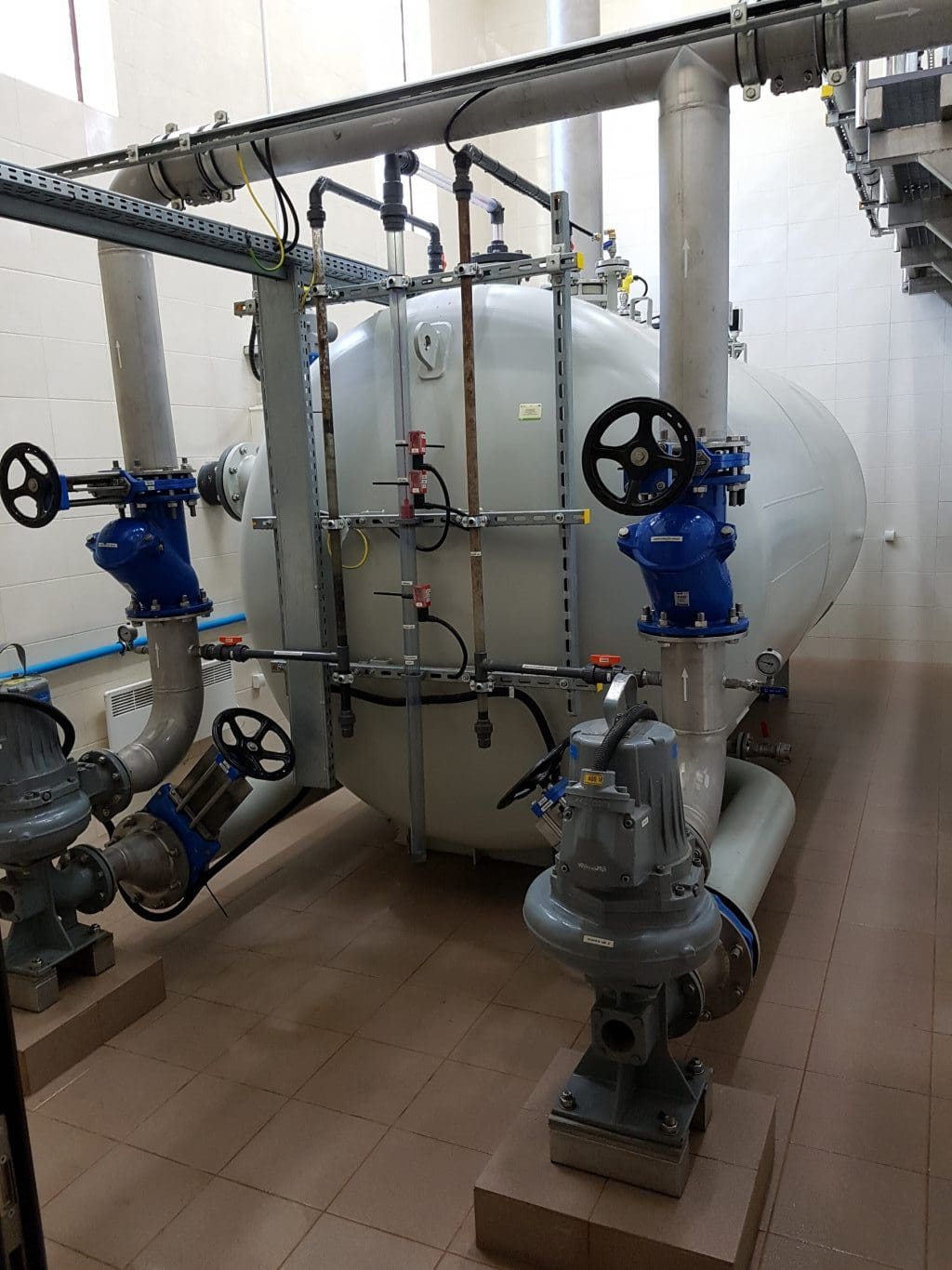
Inside the Vacuum Pump Station in Marki

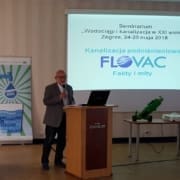

 A high profile project and one of the largest scale vacuum sewerage systems ever designed had an official opening this month in Bahrain for its key resort project.
A high profile project and one of the largest scale vacuum sewerage systems ever designed had an official opening this month in Bahrain for its key resort project.



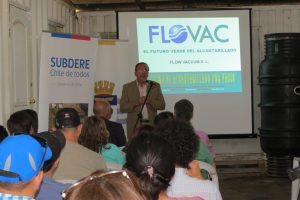 A FLOVAC delegation was recently in Chile, in the Llay-Llay commune, where the first vacuum sewerage installation of the country is being built. As this technology is innovative for the Chilean technicians, a conference was organized for everyone interested in FLOVAC’s system, having it coincide with the formation day of the Regional Development Subsecretary (SUBDERE).
A FLOVAC delegation was recently in Chile, in the Llay-Llay commune, where the first vacuum sewerage installation of the country is being built. As this technology is innovative for the Chilean technicians, a conference was organized for everyone interested in FLOVAC’s system, having it coincide with the formation day of the Regional Development Subsecretary (SUBDERE).
 For the regional manager of Subdere Valparaíso, Eduardo Pasten, the pioneering and innovative project that is implemented in Llay Llay, can be replicated in other cities of the country. He emphasizes the importance of the presence of representatives from all over Chile, “in order to be able to disseminate, and if applicable in the regions, to implement it,” Pasten said.
For the regional manager of Subdere Valparaíso, Eduardo Pasten, the pioneering and innovative project that is implemented in Llay Llay, can be replicated in other cities of the country. He emphasizes the importance of the presence of representatives from all over Chile, “in order to be able to disseminate, and if applicable in the regions, to implement it,” Pasten said.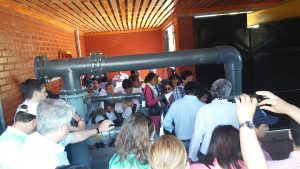 Another important consideration was the low amount of power that is required for the vacuum pump station. With power required only at the vacuum pump station a back up generator can easily be supplied if there is any interruption to local power supplies.
Another important consideration was the low amount of power that is required for the vacuum pump station. With power required only at the vacuum pump station a back up generator can easily be supplied if there is any interruption to local power supplies.

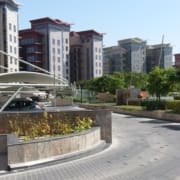


 Merko, the leading construction company in Estonia has finished construction in Vääna-Jõesuu of Estonia’s second vacuum sewerage system – Flovac’s first system was completed last year in Leppneeme and has performed better than expectations for both the community and the operators.
Merko, the leading construction company in Estonia has finished construction in Vääna-Jõesuu of Estonia’s second vacuum sewerage system – Flovac’s first system was completed last year in Leppneeme and has performed better than expectations for both the community and the operators.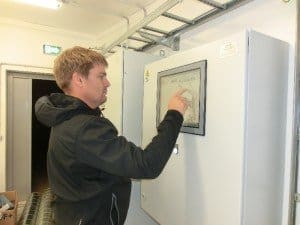 “A vacuum station and waste water pumping station were built in the Puraviku tee and Nõmmerohu tee area, as well as 3.8 km of drinking water piping and 4.1 km of sewerage piping, including nearly 3.6 km of vacuum sewerage piping. The benefit of vacuum sewerage is efficiency – the sewerage pumping station does not have to pump excess water, since the watertight vacuum sewerage system takes in significantly less water from rainfall, snowmelt, leaking pipes and wells than ordinary sewerage systems. The vacuum sewerage tanks are waterproof and the tanks’ lids are 10-20 cm above the ground to prevent rainwater from leaking in from the lid,” Laidma explained.
“A vacuum station and waste water pumping station were built in the Puraviku tee and Nõmmerohu tee area, as well as 3.8 km of drinking water piping and 4.1 km of sewerage piping, including nearly 3.6 km of vacuum sewerage piping. The benefit of vacuum sewerage is efficiency – the sewerage pumping station does not have to pump excess water, since the watertight vacuum sewerage system takes in significantly less water from rainfall, snowmelt, leaking pipes and wells than ordinary sewerage systems. The vacuum sewerage tanks are waterproof and the tanks’ lids are 10-20 cm above the ground to prevent rainwater from leaking in from the lid,” Laidma explained.
 As trains come into the yard maintenance crews can hook up a vacuum hose via a fitting to the trains sewage holding tanks. The tank is evacuated via a push button control on the Flovac Valve. Sewage goes via a vacuum main back to a series of vacuum pumps and then discharged to the gravity network.
As trains come into the yard maintenance crews can hook up a vacuum hose via a fitting to the trains sewage holding tanks. The tank is evacuated via a push button control on the Flovac Valve. Sewage goes via a vacuum main back to a series of vacuum pumps and then discharged to the gravity network. The management team and operators at Willowbrook were particularly impressed with the speed of the evacuation of the trains as the process took a matter of seconds rather than the extensive delays that they have previously had. This meant that money was saved in labour costs but more importantly in the amount of time that it took to get the trains back into service.
The management team and operators at Willowbrook were particularly impressed with the speed of the evacuation of the trains as the process took a matter of seconds rather than the extensive delays that they have previously had. This meant that money was saved in labour costs but more importantly in the amount of time that it took to get the trains back into service.

